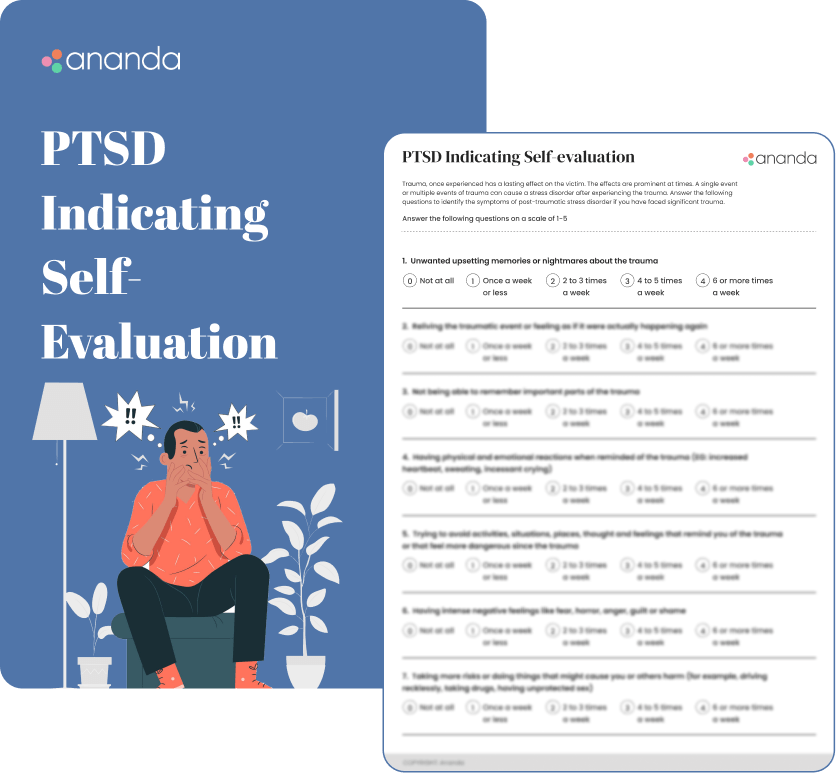PTSD Indicating Self-Evaluation
The Self-Evaluation method is used to evaluate oneself on the basis of the score obtained on the test and to analyze the situation critically and act on it. This method will help individuals to honestly evaluate their strengths, and weaknesses and get to know themselves better.

Download "PTSD Indicating Self-Evaluation"
The PTSD Indicating Self-Evaluation is a short 10-item evaluation wanting to measure your PTSD levels and trying to understand your mental health condition to the best.
PTSD is a mental health condition that can develop after someone goes through a life-threatening event, like a car accident, combat, or a serious illness; or when sudden life-threatening events happen to a loved one. Seeing and hearing about human suffering and death at work over and over, like medics, and nurses, can also contribute to PTSD.
Severity of PTSD- Mild, Moderate, High
It will help you better understand your mental health condition.
The evaluation will help you gain insight into your emotions and work on them.
Frequently Asked Questions
The PTSD Indicating Self-Evaluation is a PTSD evaluation test that will make you aware of your PTSD levels and how severe it is. This self-evaluation will give you a better understanding of the symptoms of PTSD if you have any. It will also give you insights into any issues that you are facing at the moment and to seek help for them.
The biggest advantage of this self-evaluation is that it gives you an overview of your overall mental well-being in general and whether you need to reach out to a mental health professional to seek help and guidance. Along with this, it will give you an insight into the physical as well as emotional signs and symptoms.
Once you have taken the evaluation and answered all the questions, you will be required to score yourself for each answer and get a total score as well as per the instructions given below the test. Your total score will determine the severity of PTSD that you may be facing. You can then proceed to book a session with Ananda if you feel so!
People with PTSD continue to have intense and disturbing thoughts and feelings associated with the traumatic event long after the event has ended. They begin reliving the events through flashbacks and nightmares which make them feel sad, afraid, or angry. They may even feel cut off or alienated from other people.
People with PTSD struggle to make sense of what happened to them or what they witnessed. They might have upsetting images or memories of the most upsetting parts of the trauma, even though they spend a lot of time trying to avoid anything that might remind them of what happened. Spending time with others feels like a lot of work and more stressful, so people with PTSD might withdraw and spend a lot more time alone. Sleep and attention problems are common in PTSD.
Some PTSD triggers can include sights, sounds, smells, or thoughts that remind you of the traumatic event in some way. Some PTSD triggers are obvious, such as seeing a news report of an assault. Others are less clear. For example, if you were attacked on a sunny day, seeing a bright blue sky might make you upset.
To be diagnosed with PTSD, an adult must have all of the following for at least 1 month:
- At least one re-experiencing symptom.
- At least one avoidance symptom.
- At least two arousal and reactivity symptoms.
- At least two cognition and mood symptoms.
Having to live with PTSD can seem debilitating for a person, especially one who has seen a lot of violence and been to combat for a very long time. PTSD isn’t necessarily a disability but can easily turn into one since the person is not able to return to work or earn their regular income as they used to before.
